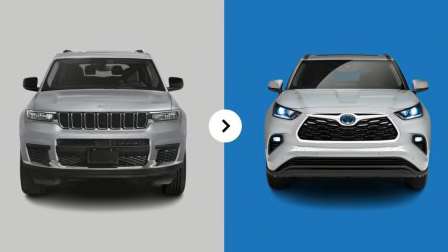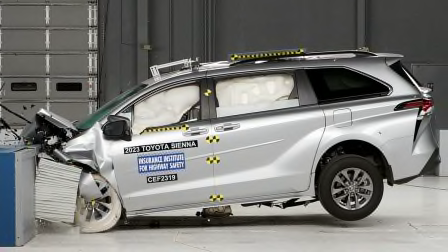What to Do If Your Car Catches Fire
Although less of a risk than decades ago, vehicle fires are still common enough to be a risk

Imagine you’re driving down the road and suddenly smell smoke or see flames shoot from under the hood or dash. What should you do? Read on for Consumer Reports’ advice on how to stay safe if your car catches on fire.
You may have seen news reports about recalls and investigations into models affected by fire risk. For example, thousands of Hyundai and Kia vehicles have caught fire since 2010, according to the National Highway Traffic Safety Administration (NHTSA), and there have been well-publicized recalls involving other models, some of which are equipped with lithium-ion batteries. And how many of us have seen videos or photos posted online depicting a Tesla EV engulfed in flames. (To be fair, not a lot of data exists yet regarding frequency of fires in gasoline-powered cars versus those powered by battery-only and hybrid powertrains, so it’s unclear which type is more common, although battery fires tend to last longer and take more water to put out.)
Where Vehicle Fires Start
A majority of fires originate within the vehicle itself. Click on flames to learn more.

What to Do If Your Car Catches Fire
Vehicle fires can spread rapidly, so you need to respond quickly:
- Pull over as soon as you can and shut off the car. This stops the flow of fuel in gasoline-powered cars and shuts down the powertrain and accessories in EVs.
- Get yourself and your passengers out of the car as quickly as possible. NFPA recommends staying at least 100 feet away from the car. It’s also a good idea to stay upwind of the burning car if possible to avoid inhaling toxic smoke and to stay out of the path of the potential spread of wind-driven fire.
- Call 911 or have another motorist make the call to get emergency services on their way as soon as possible.
- Attempt to put out the fire only if you have clear access to the source from outside the car, have a suitable fire extinguisher, know how to use it correctly, and can maintain a safe distance away from the car. Only use an extinguisher approved for Class B or Class C fires; a label on the extinguisher will identify which kind of fire it’s suitable for. Unless the fire is small and localized to a specific part of the car, avoid it. Wait for the professionals to arrive if the car is engulfed in flames.
- Never open the hood or trunk if you suspect there’s a fire there; the additional air flowing in could cause the fire to enlarge.
- Be aware of your surroundings. Never stand on an active roadway. If you’re parked by the side of the road, stay far behind the vehicle to avoid being hit if another car strikes your vehicle.
How to Avoid a Car Fire
You can take steps to make sure your car doesn’t catch fire in the first place:
- Have your car serviced regularly by a professional mechanic, says John Ibbotson, chief mechanic for CR. If you spot leaks or your car isn’t running properly, get it checked. A well-maintained car is less likely to have a fire. Become familiar with oil levels and engine temperatures during normal operation of your car.
- If you must transport gasoline, carry only a small amount in a certified gas can that’s sealed, the NFPA suggests. Keep a window open for ventilation.
- Gas cans and propane cylinders should never be transported in the passenger compartment, the NFPA says.
- Never park a car where flammables, such as grass, are touching the catalytic converter, which can reach temperatures above 1,000° F.
- Follow manufacturer recommendations for EV and plug-in hybrid (PHEV) charging, and only use a charger certified by a nationally recognized testing laboratory.
- Install a residual current device with your EV charger. It will shut off the power if it detects an electrical fault.
- Never plug a Level 1 charger (the 110-volt cord that comes with most EVs and PHEVs) into an extension cord or multi-outlet adapter.
The NFPA says to look for danger signs that a fire could be possible down the road:
- Beware of the smell of burning rubber or plastic.
- Check for cracked or loose wiring or electrical problems, including a fuse that blows more than once.
- Check for oil or fluid leaks.
- Make sure the oil cap is securely tightened.
- Watch for rapid changes in fuel or oil levels or notable increases in engine temperature.




















